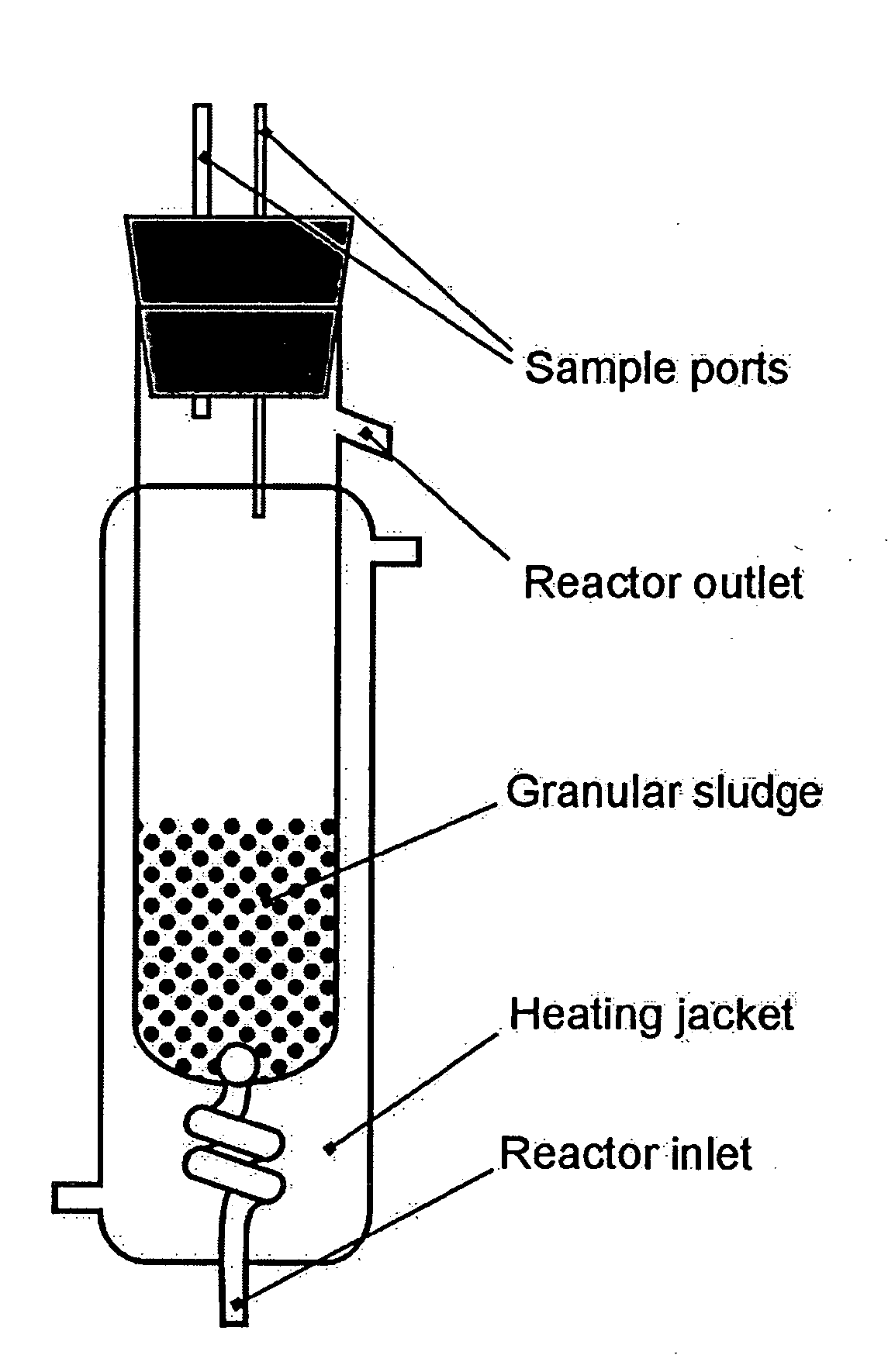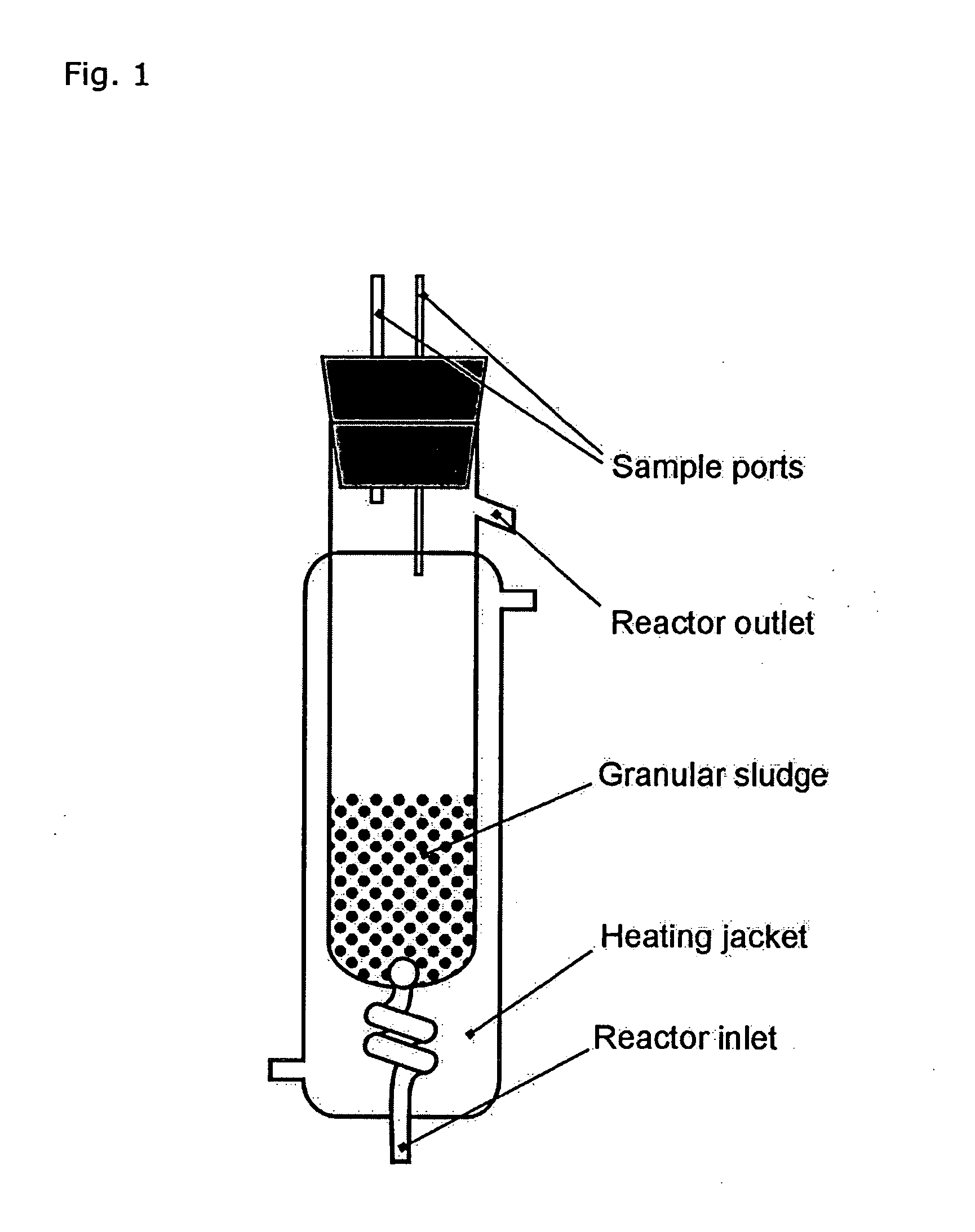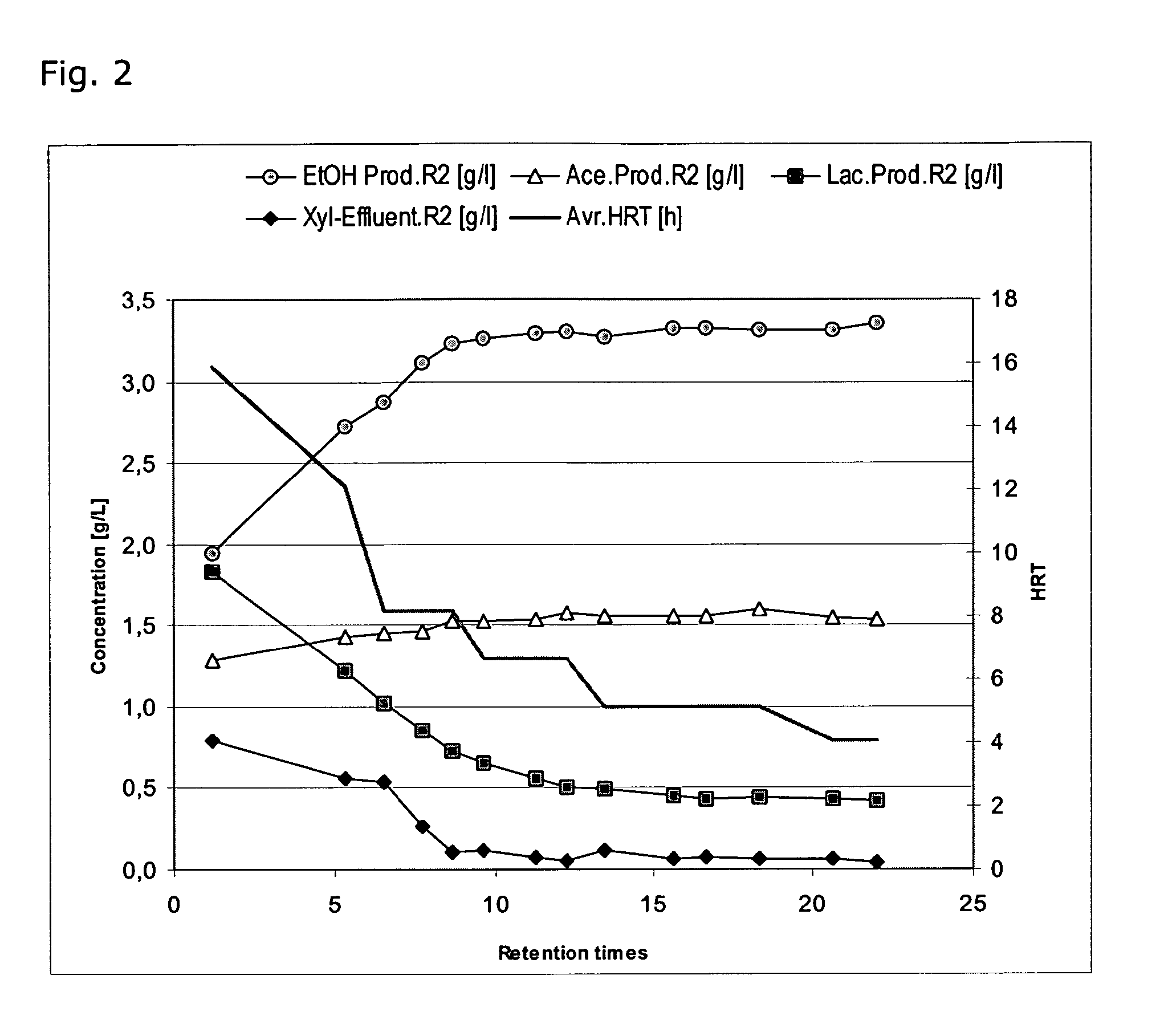Production of fermentation products in biofilm reactors using microorganisms immobilised on sterilised granular sludge
a biofilm reactor and microorganism technology, applied in the direction of microorganism fixing/supporting apparatus, biofuels, fermentation, etc., can solve the problems of reducing the conversion rate of xylose to 10%, restricting the propagation or increase of cell concentration, and adding to the cost of production
- Summary
- Abstract
- Description
- Claims
- Application Information
AI Technical Summary
Benefits of technology
Problems solved by technology
Method used
Image
Examples
example 1
Immobilised Thermoanaerobacter HY10: Continuous Production of Acetate, Lactate and Ethanol in UIR Reactors by Fermentation of Xylose
[0090]Two Upflow immobilized reactors (UIR) were operated with the thermophilic anaerobic bacterium Thermoanaerobacter HY10 at gradually decreasing hydraulic retention times. The carrier material in the reactors originated from a mesophilic full-scale UASB reactor digesting wastewater from a paper mill factory in the Netherlands, Eerbeek BV. The granular sludge was sterilized conducting 3 cycles of autoclaving at 130° C. for 20 minutes followed by overnight incubation at 37° C. After the last cycle 75 mL of granular sludge was transferred to each reactor. The granular sludge transferred to the reactors had a total suspended solid (TSS) content of 9.8% (w / w) and a volatile suspended solids (VSS) content of 6.4% (w / w). Finally the entire reactor systems, including tubing and recirculation reservoirs, were autoclaved at 120° C. for 30 minutes.
[0091]After c...
example 2
Immobilised BG1L1: Continuous Production of Ethanol by Fermentation of Xylose and Co-Fermentation of Xylose and Glucose Sugars
[0097]The potential of using an upflow immobilised reactor setup for continuous ethanol fermentation with the thermophilic anaerobic bacterium BG1L1, was investigated in a UIR as described above, operated at 70° C. (FIG. 5). The granules originated from the UASB reactor at Faxe waste water treatment plant (Denmark).
[0098]Before use, the reactor system was gassed for 15 minutes with N2 / CO2 (4:1) to ensure anaerobic conditions and filled with BA medium with an initial xylose concentration of 10 g / l. The reactor was started-up in batch mode by inoculation with 80 ml of cell suspension with an optical density (OD578) of 0.9-1. The batch mode of operation was kept during 24 hours to allow cells to attach and be immobilized onto on the carrier matrix. After the batch run, the system was switched to continuous mode applying a HRT of 8 hours and an up-flow velocity o...
example 3
Continuous Fermentation of Steam Exploded Wheat Straw Using Immobilised BG1L1
[0101]The potential of using an upflow immobilised reactor setup for continuous ethanol fermentation with the thermophilic anaerobic bacterium BG1L1, was investigated in a UIR as described above, operated at 70° C. (FIGS. 8 and 9) with steam exploded and enzyme treated wheat straw. The granules originated from the UASB reactor at Faxe waste water treatment plant (Denmark).
[0102]Steam exploded wheat straw hydrolysate (SEWS) was prepared by steam explosion followed by enzymatic hydrolysis (using Celluclast and Novozyme188 provided by Novozymes A / S) to release the constituent sugars, glucose and xylose. SEWS was provided by ELSAM, DK. The hydrolysate had a dry matter content of 23% (DM), and glucose and xylose were 57 g / l and 30 g / l, respectively. To counteract bacterial contamination, the SEWS hydrolysate medium was heated up to 121° C. for 1 min. Two SEWS suspensions were prepared by addition of respective v...
PUM
 Login to View More
Login to View More Abstract
Description
Claims
Application Information
 Login to View More
Login to View More - R&D
- Intellectual Property
- Life Sciences
- Materials
- Tech Scout
- Unparalleled Data Quality
- Higher Quality Content
- 60% Fewer Hallucinations
Browse by: Latest US Patents, China's latest patents, Technical Efficacy Thesaurus, Application Domain, Technology Topic, Popular Technical Reports.
© 2025 PatSnap. All rights reserved.Legal|Privacy policy|Modern Slavery Act Transparency Statement|Sitemap|About US| Contact US: help@patsnap.com



